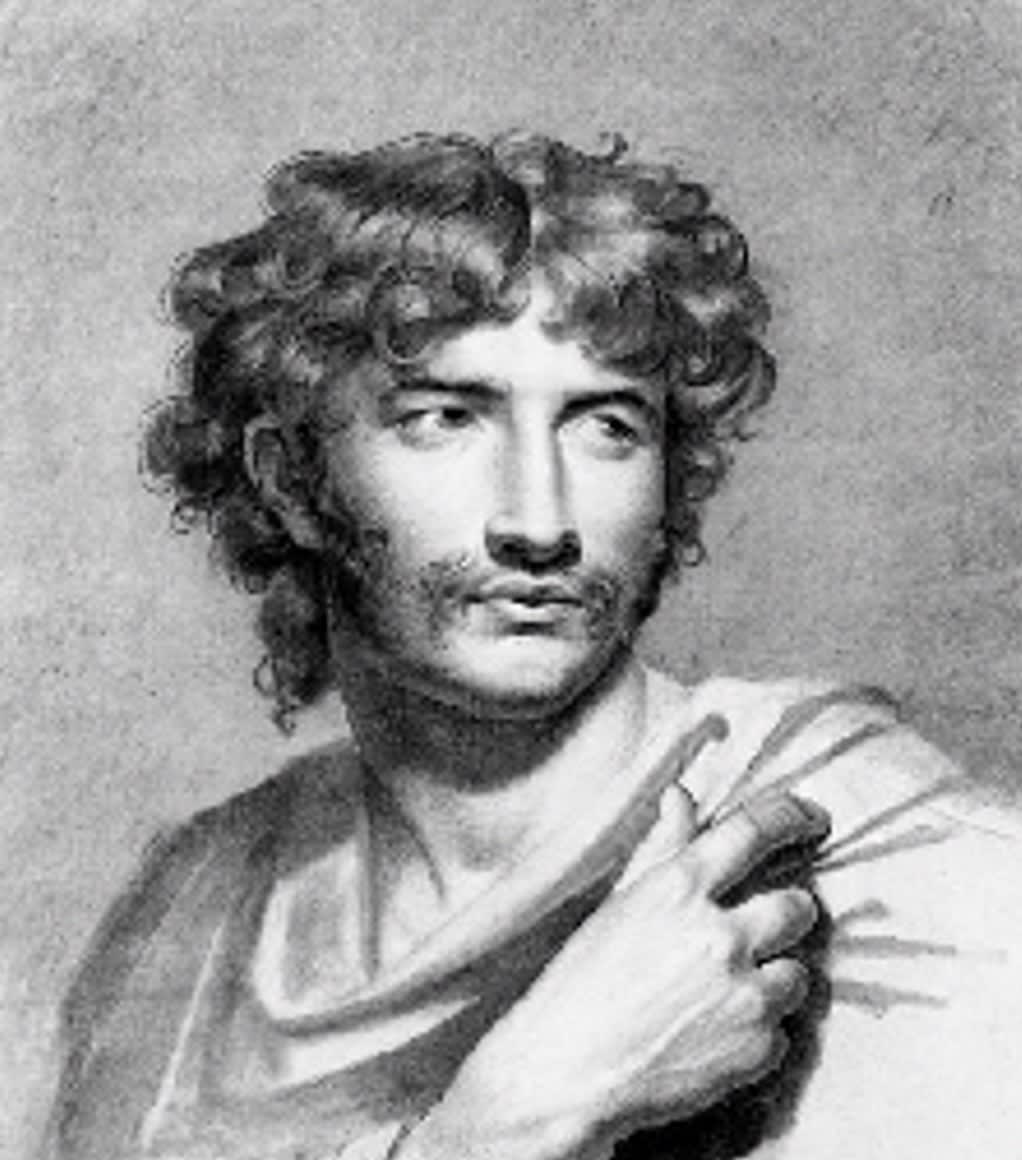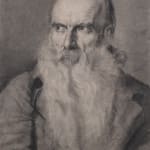Pauline Auzou (1775 - 1835)
Pauline Auzou
(Paris 1775 – 1835)
Head study of a bearded man
Black chalk with white highlights
57.8 x 54 cm. (22 ¾ x 21 ¼ in.)
Provenance:
Pauline Auzou
(Paris 1775 – 1835)
Head study of a bearded man
Black chalk with white highlights
57.8 x 54 cm. (22 ¾ x 21 ¼ in.)
Provenance:
Private collection, Versailles, since the 19th century;
Acquired in 2013 by a Parisian Private Collection, amongst
a folio of drawings by the artist;
By whom sold, Aguttes Paris, lot 81, December 6 2022.
This powerful yet delicately rendered depiction of a bearded man is a fine example of Pauline Auzou’s graphic work and comes from a folio containing several other sheets which have been on the art market in recent years.[1] Bust-length head studies form a significant proportion of Auzou’s drawings, unsurprising for a French artist active around the turn of the 19th century. Indeed, their crucial aspect within Auzou’s oeuvre can be gleaned from the publication in 1800 by the printing firm Didot of an album of her head studies, entitled Tête d’etudes.
The smooth handling of the chalk, the attention to detail and the sensitivity of expression in this study are all typical of Auzou’s style, as is the subtle understanding of light and volume. Technically, the present sheet can be closely compared to other head studies in the folio, as well as to a group of head studies offered at Christie’s London in 2000 (fig. 1).[2] Clearly Auzou was a passionate and skilled draughtswoman; according to her friend Albertine Clément-Hémery ‘nothing could distract her from her studies’.[3]

Fig. 1, Pauline Auzou, Head study of a man,
black chalk on paper, 48.7 x 42.8 cm, Private Collection
Born in Paris, Auzou received her artistic education from Jean-Baptiste Regnault, in whose studio the boundaries of decorum were broken when women studied the nude as part of their training. Auzou first exhibited at the Salon in 1793 aged 18, showing a Bacchante and a Tête d’étude, the latter being of particular interest given the subject of the present work. Exhibiting at the Salon at this age was a remarkable feat for a women artist at this time, given their systemic exclusion from the academies. Auzou continued to exhibit regularly at the Salon until 1817, showing portraits, genre scenes and mythological subjects in a Neoclassical and later Romantic style. She won a First Class medal at the Salon in 1808 for a group portrait of the Pickard family. In 1810 Auzou received a commission to paint Napoleon and his wife, Marie Louise, giving some indication of the very high esteem in which the artist was held. In the second half of her career, Auzou opened an art school for the education of young women, running this establishment for twenty years. All in all, Auzou had a very successful career, particularly given the adverse conditions within which she worked.
[1] Three individual sheets depicting head studies of young boys were with Alexis Bordes in 2014, one of which was sold at Sotheby’s London in 2020 (25 June, lot 22). A fourth sheet from this folio, of a nude male model, was sold at auction by Aguttes in Paris in 2022 (28 June, lot 70). All these sheets, of very similar dimensions to the present, are executed primarily in black chalk.
[2] Christie’s London, 15 December 2000, lots 193, 194, 197, 198 and 200.
[3] C. Clément-Hémery, Souvenirs de 1793 et 1794, Cambrai 1832.



